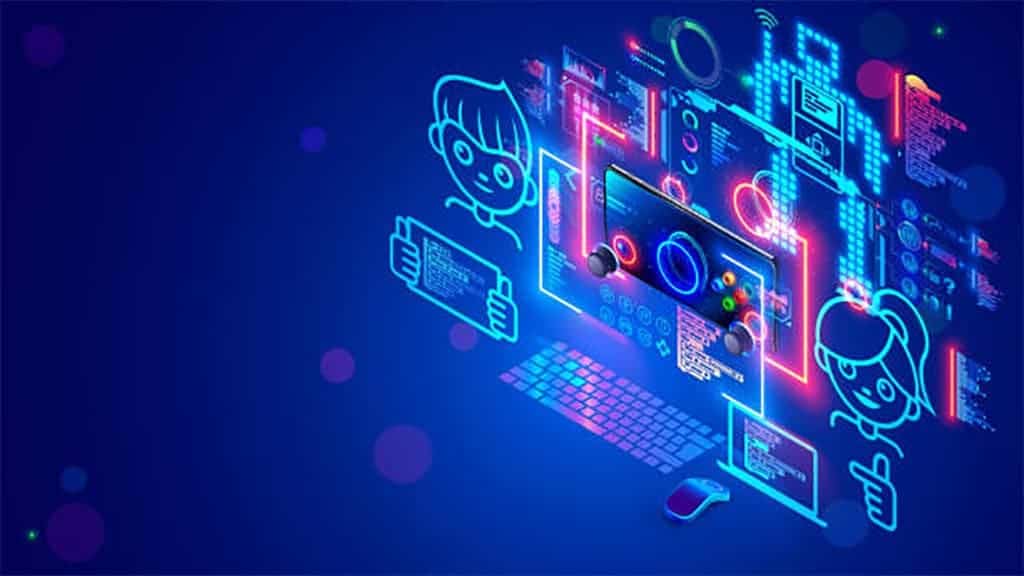Over the years, video games have journeyed from basic graphics and straightforward gameplay to intricate, lifelike universes filled with vast potential. This transformative journey can be largely attributed to the integration of Artificial Intelligence into the realm of game development. Through its multifaceted capabilities, Artificial Intelligence has emerged as the cornerstone of immersive virtual experiences, orchestrating developments that are richer and more interactive than ever before. It has extended its influence, bringing nuanced changes to narratives, gameplay mechanics, and how players engage with the virtual world. By continually analyzing and adapting to a player’s behavior, Artificial Intelligence offers a tailored gaming experience, reflecting individual choices and strategies.
Adaptive Gameplays and Dynamic Difficulty Adjustment
In the past, video games predominantly operated within fixed settings. Players would typically select a difficulty level – categorized as easy, medium, or hard – and the gameplay would remain consistent within that specified range. However, with the introduction of Artificial Intelligence, this static model has undergone a paradigm shift. The concept of Dynamic Difficulty Adjustment, powered by Artificial Intelligence, enables a game to recalibrate its challenge levels in real-time based on the player’s skills and in-game progress. If a player consistently outperforms a certain segment, the game might introduce more complex challenges. Conversely, if a player encounters difficulties, the game can tone down its intensity to ensure optimal engagement. This malleability fosters a tailored gaming experience, ensuring each player feels both challenged and accomplished.
Advanced Non-Player Character Behaviors
Previously, Non-Player Characters (or NPCs for short) were restricted to simplistic, preset actions. Their movements and responses often followed predictable patterns, offering limited interaction and engagement. However, the infusion of Artificial Intelligence into game development has drastically transformed this narrative. Modern NPCs, powered by sophisticated Artificial Intelligence algorithms, can exhibit intricate behaviors that respond dynamically to player actions and environmental stimuli. For instance, in a combat scenario, an NPC might not just confront a player head-on. Instead, powered by Artificial Intelligence, it could assess the player’s strategy, momentarily retreat, devise a more refined strategy, and then re-engage with improved tactics. Such depth in interaction ensures that gameplay remains unpredictable, immersive, and genuinely engaging.
Procedural Content Generation
For game developers, creating unique, engaging, and expansive content for players is paramount. However, the traditional method of manually crafting every detail can be immensely time-consuming. Enter Artificial Intelligence-driven procedural content generation. This method leverages algorithms to automatically generate vast, intricate, and diverse game worlds. From sprawling terrains with varying landscapes to distinct ecosystems teeming with life, Artificial Intelligence can produce content that feels organic, random, and infinite. Moreover, this capability allows developers to focus on refining gameplay mechanics and narratives, ensuring that the automatically generated worlds align with the overarching vision of the game. For players, this results in a gaming environment that remains fresh and captivating during each playthrough, continually offering new areas to explore and challenges to overcome.
Enhanced Graphics through Machine Learning
Visual aesthetics play an integral role in crafting the overall gaming experience. As technology has advanced, so has the expectation for visually stunning, realistic graphics. Here, Artificial Intelligence, and more specifically machine learning, has been a game-changer. Techniques like Deep Learning Super Sampling have redefined graphic rendering. Instead of relying solely on brute hardware power, these techniques use machine learning to upscale images intelligently, enhancing resolution and details. As a result, games look more lifelike and detailed, even on less powerful hardware. This democratizes access to high-end visual experiences, ensuring more players can enjoy the pinnacle of gaming graphics regardless of their hardware setup.

Game Testing and Quality Assurance
In the past, game testing largely depended on human testers who would play different sections of the game to identify issues or bugs. While this method had its merits, it was not foolproof. With the integration of Artificial Intelligence into the game testing process, this paradigm is shifting. Artificial Intelligence-powered bots can rigorously play the game in a fraction of the time, identifying glitches, potential balance issues, and other anomalies. This process helps in uncovering issues that might have been overlooked during human testing. Moreover, it ensures a smoother and more refined gaming experience for the end-users, minimizing post-launch patches and updates.
Personalized Player Experiences
One of the most significant contributions of Artificial Intelligence to gaming is personalization. By analyzing a player’s in-game choices, strategies, and preferences, Artificial Intelligence systems can tailor gameplay to fit individual play styles. Whether it’s suggesting character outfits, weapons, or even adjusting in-game narratives, the potential for a personalized gaming experience is vast. This ensures that each player’s journey remains unique and reflective of their preferences, elevating the sense of immersion and ownership within the game world.
Realistic Game Physics and Simulations
The quest for realism in games extends beyond just graphics. How the game world responds, reacts, and evolves plays a crucial role in immersion. Artificial Intelligence-driven simulations have revolutionized this aspect, creating in-game physics that mirror real-world dynamics. Whether it’s the flow of water, the swaying of trees, or the detailed destruction of structures under stress, these simulations ensure the virtual world feels alive and consistent with real-world physics. This adds layers of depth to gameplay, making interactions within the game world more believable and engaging.
Conclusion
The fusion of Artificial Intelligence with video game development heralds an era where virtual experiences are not just visually rich but are emotionally and intellectually engaging. As Artificial Intelligence technologies continue to mature, their role in shaping, refining, and personalizing gaming experiences will only become more pronounced. For developers and players alike, this presents a future where games will not just be about achieving objectives or unlocking achievements but about experiencing lifelike, adaptive, and deeply personal virtual realities. The horizon of gaming, enriched by Artificial Intelligence, beckons with limitless possibilities.
